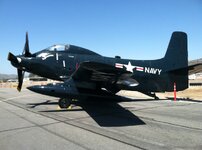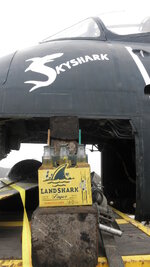Admiral Beez
Major
Watching the Barracuda land so apparently easily shows how good design help. It might be ugly, but all those flaps along with an excellent pilot view must help.But the principle of making sure the pilot of a carrier aircraft had a good view over the nose was not entirely lost on British designers. Look at how the pilot's cockpit moved forward from Shark & Swordfish to Albacore & Barracuda so that he sat at the wing leading edge as opposed to its trailing edge.
Start at 1:01


